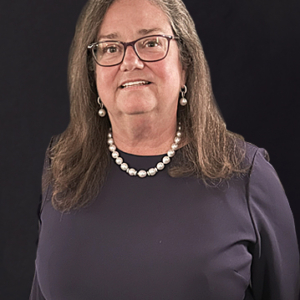- March 1, 2024
- Insights
Many professionals make the mistake of thinking their expertise and the technical skills of their trade will be enough to help them advance throughout their careers. However, at some point nearly all of us find out that certain intangibles are just as important.
A few years ago I wrote a blog post about the importance of being “bankable.” What does being bankable mean? You’re bankable to the extent that you’re a known and trusted figure to people both inside and outside your organization. It largely comes down to how many people you have in your network who will go to bat for you.
This is an especially important trait in the lending industry, where there are very few if any senior positions that are strictly internal. It’s nearly impossible to reach the upper executive seats if you don’t have bankability.
Becoming bankable is something that takes time and consistent effort, and the tips I gave in my original blog are still relevant today. Here is a summary.
Thought Leadership
Becoming a thought leader is not as daunting as it sounds. The key is to devote weekly time to building your reputation so that it becomes part of your routine.
Here is a short blueprint for becoming known as a go-to thinker in your field:
Always have your antenna up
Pay close attention to what those around you are saying. Pick a few industry blogs and/or newsletters, read them religiously, and take time to reflect on what you’re reading. Stay on the lookout for emerging trends, especially thorny challenges that remain unaddressed.
Refine your understanding
When you find a topic of interest that you think you can weigh in on, talk to people inside your organization and refine your thoughts. When you’re ready, test out your ideas by commenting on LinkedIn posts and online articles to gauge others’ reactions and gather feedback.
Push your ideas out gradually
Once you’re comfortable with your evolved position on the topic, gradually push your ideas out externally. Start small with tweets and LinkedIn posts, then get bolder and take your ideas to bigger forums over time. Pretty soon, people will be seeking you out for your opinion.
Public Speaking
Eventually you want to be speaking at conferences and other large events, but this is probably not the best place to start. Here are some ideas to build your reputation in the meantime.
Start inside your organization
There are plenty of ways to speak within most organizations. Here are a few ideas:
- Go to HR and offer to do a “lunch and learn” for junior employees
- Volunteer to organize a few weeks of content for summer interns, and consider inviting guest speakers you’ve always wanted to meet
- Join your company’s on-campus recruiting team and speak to prospective hires about your industry
- Consider volunteering to interview people internally
Then, start venturing out
- Consider hosting webinars for clients on themes from your lunch and learn sessions
- Choose a topic from your recruiting efforts and record a video for the HR onboarding team to use with new hires
- Publish webinar ideas and video clips to social media platforms and your company blog
The great thing about video is that it has a long shelf life. Repurposing the videos you’ve recorded across the internet will likely result in speaking invitations.
Personal Branding
Like the above areas, personal branding takes time to build, but it’s worth the effort. Here are a few tried and true strategies:
- Publish content that is strong and in your own voice, but don’t be afraid to learn from the approach of established leaders
- Patiently and consistently build your network in concentric circles: start by engaging with colleagues and industry connections you know well, and then move on to industry leaders whom you don’t know well or at all.
- Look for opportunities to help other people and you’ll be rewarded in turn
- Branch out into the community and speak to non-industry groups
Become known as someone who not only has interesting ideas, but is eager to share. That’s the kind of person that every organization wants at the top.
The original article is available here.





